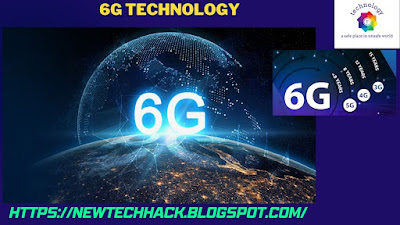Introduction:
As 5G technology continues to roll out globally, the tech industry is already looking ahead to the next era of wireless connectivity – 6G. While 5G offers significant advancements over its predecessors, 6G is expected to revolutionize the way we communicate, connect, and experience the digital world. In this article, we will explore the emergence of 6G technology, its potential features, and the transformative impact it may have on various aspects of our lives.
Understanding 6G Technology:
6G is the sixth generation of wireless technology, building upon the foundations laid by its predecessors (2G, 3G, 4G, and 5G). While 5G technology is still in the early stages of global deployment, the development of 6G has already begun in research labs and academia. The primary goal of 6G is to further enhance wireless connectivity, offering even faster data speeds, lower latency, higher capacity, and more seamless connectivity.
Potential Features of 6G:
While 6G is still in its conceptual stages, several potential features and technologies are being discussed:
Terahertz (THz)Frequencies: 6G is expected to operate in the terahertz frequency spectrum, which offers much higher data transfer rates than the gigahertz frequencies used by 4G and 5G.
Massive MIMO and Beamforming: 6G is likely to utilize advanced multiple-input, multiple-output (MIMO) and beamforming technologies to enhance network capacity, coverage, and spectral efficiency.
Holographic Beamforming: This innovative technique may be employed in 6G networks to direct signals more precisely, enabling improved user experiences and reducing interference.
Artificial Intelligence (AI) Integration: AI is expected to play a more significant role in 6G, aiding in network optimization, resource allocation, and intelligent network management.
Ultra-Low Latency: 6G aims to achieve ultra-low latency, potentially in the sub-millisecond range, crucial for real-time applications like augmented reality (AR), virtual reality (VR), and autonomous vehicles.
Quantum Communications: Quantum communication technologies may be explored to enhance security and encryption in 6G networks.
Transformative Impact of 6G:
Enhanced Connectivity: 6G is expected to provide seamless and ubiquitous connectivity, allowing devices and machines to communicate at unprecedented speeds.
Immersive Experiences: With ultra-low latency and high data rates, 6G could enable truly immersive AR and VR experiences without lag or buffering.
Smart Cities and IoT: 6G's capacity to connect a massive number of devices could propel the development of smart cities and accelerate the Internet of Things (IoT) ecosystem.
Revolutionizing Industries: From healthcare to transportation and manufacturing, 6G has the potential to transform industries, enabling real-time remote surgery, autonomous transportation, and smart factories.
AI and Edge Computing: 6G's integration with AI and edge computing could lead to more intelligent, decentralized networks capable of handling data processing at the edge of the network.
Challenges and Considerations:
The development and deployment of 6G technology come with several challenges and considerations:
Spectrum Allocation: The allocation of terahertz frequencies and international coordination will be critical for 6G's success.
Infrastructure Upgrades: Implementing 6G will require significant infrastructure upgrades, including the installation of new base stations and hardware.
Energy Efficiency: 6G must address energy efficiency concerns, as higher data speeds and advanced technologies could lead to increased power consumption.
Regulatory and Security Concerns: As with any new technology, addressing regulatory and security concerns will be vital for 6G's safe and responsible deployment.
Conclusion:
While 6G technology is still in its infancy, it holds the promise of revolutionizing the way we connect and interact with the digital world. With its ultra-fast data speeds, ultra-low latency, and advanced capabilities, 6G has the potential to usher in a new era of transformative technologies and applications. However, the successful deployment of 6G will require careful planning, collaboration between industries and governments, and a focus on addressing challenges related to infrastructure, spectrum allocation, and energy efficiency. As we look forward to the future, the emergence of 6G technology is undoubtedly an exciting prospect with the potential to reshape our digital experiences and accelerate technological advancements.






No comments:
Post a Comment